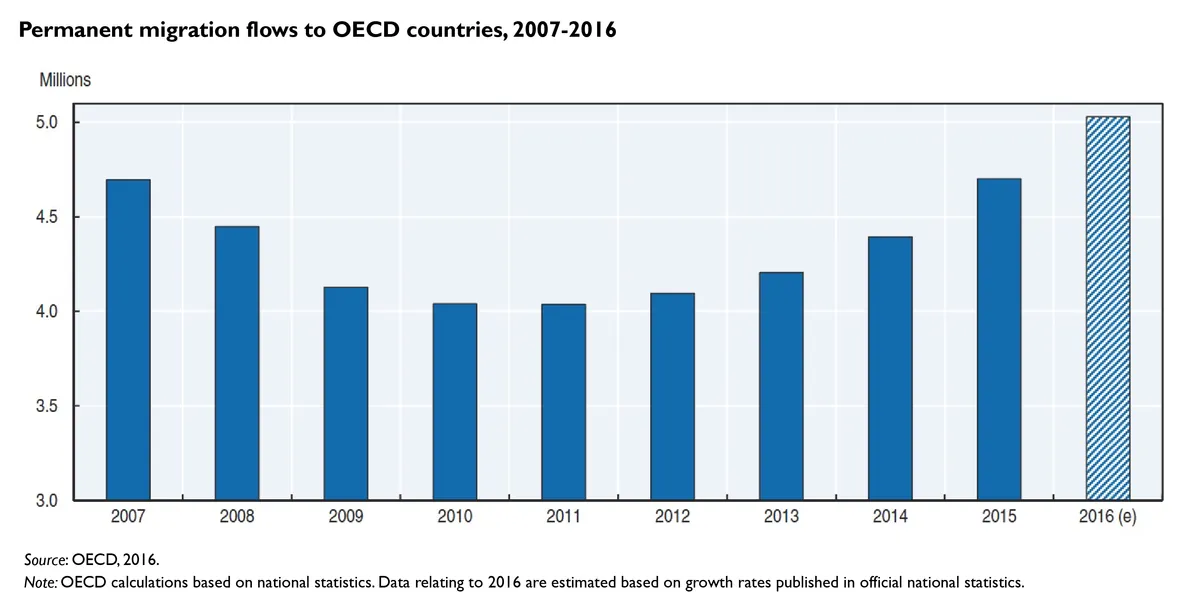UK Fiscal Watchdog Reveals Long-term Costs of Low-skilled Migration
OBR report highlights financial impact of different migrant types on UK economy. Analysis suggests current migration patterns could lead to significant long-term debt increases, challenging previous economic assumptions.

The Office for Budget Responsibility (OBR), established in 2010 as the UK's fiscal watchdog, has released a report that challenges long-held assumptions about the economic benefits of migration. The analysis reveals that mass low-skilled migration could have severe financial implications for Britain over the long term.
The OBR's report models three categories of migrants based on their earnings relative to the UK average salary, which stands at approximately £33,000 per year in 2024. These categories include average-wage, high-wage, and low-wage migrants.
According to the model, high-wage migrants, earning 30% above the UK average, contribute positively to public finances. By the time they reach the average life expectancy of 81 years, they will have contributed a net £767,000 to the economy. In contrast, low-wage migrants, earning 50% below the UK average, represent a fiscal drain from their arrival, potentially costing taxpayers £465,000 by age 81.

This revelation contradicts the prevailing economic orthodoxy that all migrant workers are net contributors. The report's findings are particularly significant given the UK's current immigration patterns. Analysis of recent visa data suggests that a majority of skilled worker visas are issued to individuals likely to earn less than the average UK salary.
The Centre for Policy Studies, a think tank founded in 1974, estimates that approximately 72% of skilled worker visas in 2022-23 went to individuals earning below the UK average salary. More alarmingly, about 54% were likely earning just half of the average salary, falling into the OBR's "low-wage migrant" category.
These figures raise concerns about the long-term fiscal impact of current migration trends. The OBR projects that under a scenario of average-wage migration, the UK's debt-to-GDP ratio could rise to 274% by 2074. However, in a low-wage migration scenario, this figure could reach a staggering 351% of GDP.
"By the time they reach 81, they will have cost the taxpayer £465,000."
It's worth noting that the UK's current debt-to-GDP ratio is around 100% as of 2024, highlighting the potential severity of this projected increase.
The report also sheds light on the composition of recent visa issuances. Of the 3.6 million visas issued in recent years, only 12% went to workers on the skilled route, with an estimated 5% going to higher-skilled migrants who may be net contributors. This includes a mere 0.8% of visas granted to overseas doctors for the National Health Service (NHS), which employs over 1.3 million people in England alone.
These findings suggest that the UK's immigration policy may need reassessment to better align with long-term fiscal goals. The article argues for a shift towards higher-skilled, higher-wage migration to improve the overall economic impact.
As the UK grapples with an aging population and increasing pressure on public services, the fiscal implications of immigration policies become increasingly crucial. The state pension age is set to rise to 67 between 2026 and 2028, further highlighting the importance of maintaining a sustainable fiscal trajectory.
The report's revelations are likely to fuel ongoing debates about immigration policy and its economic consequences. As the UK continues to experience labor shortages in various sectors, policymakers face the challenge of balancing short-term needs with long-term fiscal sustainability.


































